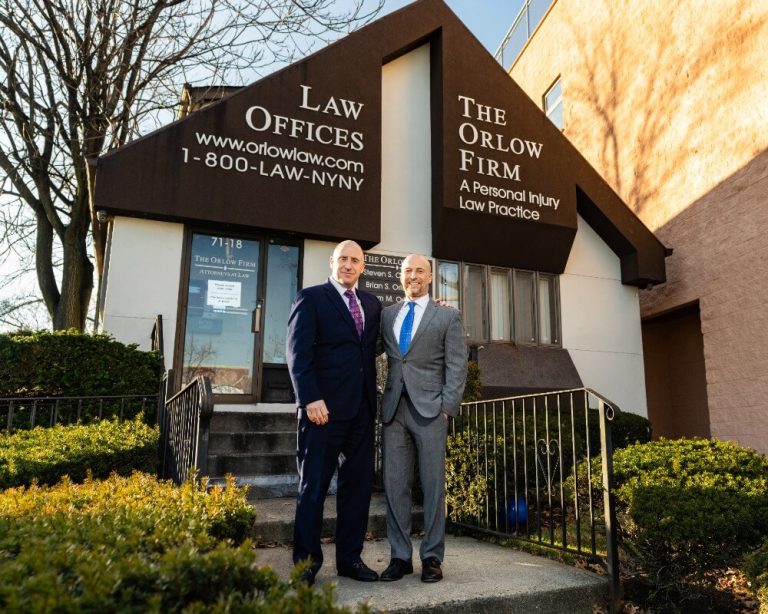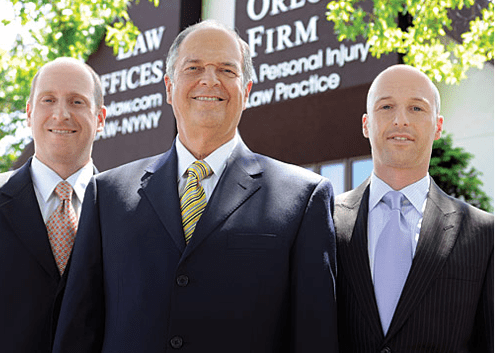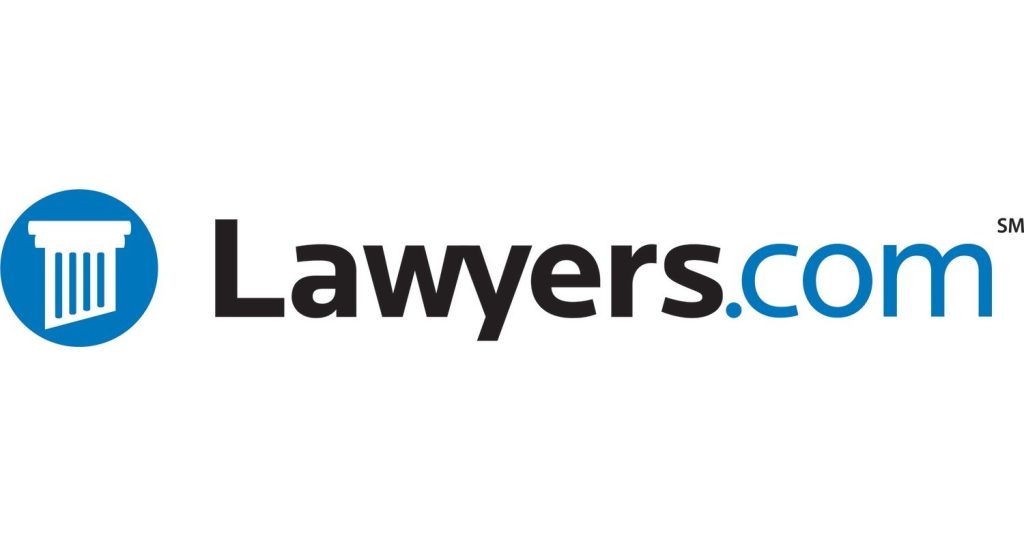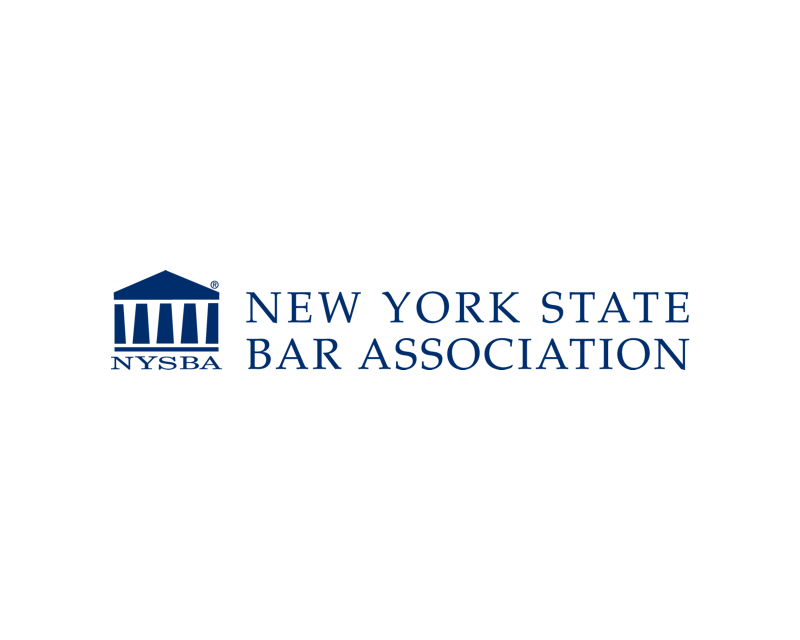The Following People Contributed to This Page
Cindy Cordova is a seasoned legal writer with over seven years of experience crafting clear, informative, and professional content for law firm websites. With a B.A. in English from Trinity Christian College, she combines her strong writing background with a deep understanding of legal topics to help firms connect with their clients through trustworthy and accessible content.
- June 10, 2025
What Does Proximate Cause Mean in a New York Personal Injury Case?
Quick Answer: Proximate cause means the injury was directly caused by someone’s actions and not by something unrelated. In New York personal injury cases, proving proximate cause is key to showing the other party is legally responsible. For personalized guidance, contact The Orlow Firm at (646) 647-3398 for a free consultation.
How Is Proximate Cause Different from Actual Cause?
In a New York City personal injury case, it’s important to understand the difference between actual cause and proximate cause. While they may sound similar, they play different roles in proving who is legally responsible for an injury.
Actual cause, also known as “cause in fact,” is the basic idea that someone’s action directly caused the injury. To prove actual cause, lawyers often ask, “Would this injury have happened if the person hadn’t acted the way they did?” If the answer is no, then that action is likely the actual cause.
Proximate cause, on the other hand, is about whether the harm was a foreseeable result of that action. It helps limit blame to those whose actions caused predictable damage. Even if someone caused harm by accident, they might not be legally responsible if the injury was too far removed from their actions or not something they could have reasonably expected.
Here’s a simple example to highlight the difference:
- Actual cause: A driver runs a red light and hits a pedestrian. The driver’s action caused the accident.
- Proximate cause: The pedestrian breaks a leg. That type of injury is a foreseeable result of a car hitting a person, so the driver’s actions are also the proximate cause.
Now imagine a different twist: A driver gently bumps another car. That car swerves, hits a fire hydrant, which sprays water onto a nearby electric box, causing a power outage. A person two blocks away trips in the dark and gets hurt. While the initial bump may be the actual cause, many courts would say it’s not the proximate cause. The harm was too far removed and unpredictable to legally blame the driver.
In New York personal injury cases, proving proximate cause is just as important as proving actual cause. Courts need to see that the injury was not just caused by someone’s actions, but also that it was a direct and foreseeable result of those actions. Without proximate cause, a case may not survive in court—even if actual cause is clear.
If you’re unsure whether your case involves both types of cause, speaking with a personal injury lawyer can help. For personalized guidance, contact The Orlow Firm at (646) 647-3398 for a free consultation.
Why Is Proximate Cause Important in NYC Personal Injury Claims?
Proximate cause is important in New York City personal injury claims because it connects a person’s actions to the injury. In simple terms, it helps show who is legally responsible for what happened. If you were hurt in an accident, you must prove that the other person’s actions were not just a cause, but the legal reason your injury happened. Without proximate cause, your case may not succeed in court.
To win a personal injury case in NYC, there are usually two things you must prove:
- Someone acted negligently – This means they failed to act with reasonable care. For example, a driver may have been texting instead of watching the road.
- Their actions were the proximate cause of your injury – This means the injury was a direct and predictable result of what they did.
If there is no clear link between their actions and your harm, the court may decide they are not legally responsible, even if they behaved carelessly.
Here’s why proximate cause matters so much in NYC personal injury claims:
- It protects fairness: You can only hold someone responsible if their actions actually led to your injury in a direct way.
- It can impact who pays: In major accidents, more than one person or company may be involved. Proximate cause helps the court figure out whose actions truly caused the harm.
- It strengthens your case: Showing proximate cause helps prove that your injury wasn’t just a random event. It was something that happened as a result of someone’s careless behavior.
Let’s look at a simple example. Imagine you trip and fall on a broken step in a Bronx apartment building. If the landlord knew about the broken step and didn’t fix it, their failure to act could be the proximate cause of your injury. But if you were running and not watching where you were going, the landlord’s role may be harder to prove.
In busy areas like Manhattan or Brooklyn, where accidents happen often, proving proximate cause can be tricky. Construction sites, traffic, and crowded sidewalks can all raise questions about what, or who, really caused the injury.
If you have questions about whether proximate cause applies to your situation, it’s a good idea to speak with a personal injury attorney. At The Orlow Firm, we take time to understand your case and help determine what caused your injury. Call us at (646) 647-3398 for a free consultation.
What Types of Evidence Help Prove Proximate Cause in New York?
To prove proximate cause in a New York personal injury case, you need strong, clear evidence linking the other party’s actions to your injury. Proximate cause means the injury was a direct and foreseeable result of someone else’s negligence. In New York City, where accidents can happen in many ways, careful documentation and witness support can make all the difference.
Here are common types of evidence that can help prove proximate cause in New York:
- Witness Statements: Eyewitnesses can describe what they saw and help explain how the accident happened. Their testimony can help show that the other party’s actions directly caused your injury.
- Video Footage: Security cameras, traffic cameras, or cell phone videos are especially useful in NYC. They can provide real-time proof of the events that led to your injury.
- Photographs: Photos of the accident scene, property damage, and visible injuries can help show the conditions and what caused the incident.
- Medical Records: These show the timing and type of injury you suffered. Medical documentation can connect your injury to the accident and rule out other causes.
- Accident Reports: In cases like car crashes or slip and falls on public property, police or building incident reports may give a neutral account of the event. These are often helpful in showing how the injury occurred and who was involved.
- Expert Testimony: In more complex cases, professionals such as accident reconstruction specialists or doctors may explain how the actions of others likely caused your injury.
- Maintenance or Inspection Records: If your injury happened due to poor maintenance, like a broken stairway or faulty equipment, records showing neglect can support your claim that the injury was foreseeable and preventable.
For example, imagine you slip on an icy sidewalk outside an apartment building in the Bronx. If a video shows that the sidewalk was untreated for hours after it snowed, and a neighbor confirms no one was seen clearing the area, that could prove that the building’s failure to shovel caused your fall.
Proving proximate cause isn’t just about showing that an injury happened. It’s about showing why it happened, and who should be held responsible. In New York City, where evidence can disappear quickly, it’s important to gather as much support as possible soon after the accident.
If you or a loved one has been hurt due to someone else’s negligence, The Orlow Firm can help you understand what evidence is needed in your case. Call us for a free consultation at (646) 647-3398.
Can There Be More Than One Proximate Cause of an Injury?
Yes, there can be more than one proximate cause of an injury in a personal injury case. In fact, it’s fairly common for multiple parties or actions to contribute to someone’s injuries. In New York City, just like in the rest of New York State, courts recognize that more than one person or event can legally share responsibility for causing harm.
Proximate cause means a cause that is legally considered close enough to the harm to hold someone responsible. When there are multiple proximate causes, each one must have played a meaningful role in leading to the injury—even if it wasn’t the only cause.
Here’s a simple example: Imagine a person is walking through a Brooklyn sidewalk. A store owner failed to shovel snow from the entrance, and at the same time, a city garbage truck splashes icy water onto the walkway. The person slips and falls, breaking a hip. In this case, both the store owner and possibly the city’s actions could be considered proximate causes.
New York allows injury cases to name more than one responsible party. Sometimes, different parties share the blame in percentages, which is called comparative fault. For example:
- The building owner might be 70% responsible for not clearing the sidewalk.
- The delivery driver who caused a hazard might be 30% responsible.
As long as each party’s actions directly contributed to the injury, they may be held legally responsible. This doesn’t mean every minor detail counts—only causes that had a clear and direct link to the injury qualify as proximate causes.
In these situations, the court looks at whether each action was reasonably foreseeable and whether it was a major part of the chain of events that caused the injury. If so, each party might be required to pay a share of the damages.
Understanding this concept is especially important in a busy place like New York City, where many factors can contribute to an accident. If you’ve been injured and believe more than one person or party was involved, it’s helpful to speak with an attorney who understands how proximate cause works in NYC personal injury cases. Contact The Orlow Firm at (646) 647-3398 to discuss your situation confidentially and get the help you need.
How Do Courts in NYC Decide If Proximate Cause Exists?
In New York City personal injury cases, courts look closely at whether the person or party being blamed actually caused the injury in a legal sense. This is called proximate cause. To decide if proximate cause exists, courts ask a key question: Was the injury a foreseeable result of the defendant’s actions?
“Foreseeable” means something that a reasonable person could expect to happen. If the injury is too far removed or unusual, it may not count legally as proximate cause—even if the defendant did something wrong.
Here are some of the main steps courts in NYC take to decide whether proximate cause exists:
- Check for a direct link: The court looks at whether there is a close and clear link between the defendant’s behavior and the injury.
- Consider foreseeable harm: The court asks whether a reasonable person should have expected that the action could cause harm.
- Review the chain of events: If there are many events between the action and the injury, courts consider whether those events were unusual or expected.
- Look at whether the action was a “substantial factor”: The court checks if the defendant’s action was a major part of why the injury happened, even if other things also played a role.
For example, if a driver runs a red light in Brooklyn and hits a pedestrian, then the driver’s action is likely a proximate cause of the injury. It’s clear and direct, and it’s something a reasonable person would expect to cause harm.
But let’s say a driver parks illegally, and hours later, someone else has a strange accident while walking around the car. If the injury wasn’t closely tied or predictable based on the parked car, a court may rule there’s no proximate cause.
In more complex NYC cases, like construction accidents or multi-car crashes, judges or juries may hear expert witnesses and review detailed facts. They look at how events unfolded and whether the injury was a natural result of someone’s careless or reckless behavior.
At its core, proximate cause helps the court ensure that people are only held responsible for injuries that they could reasonably expect to cause by their actions.
If you’ve been injured and aren’t sure whether proximate cause applies in your case, it’s important to speak with a personal injury attorney. The Orlow Firm can help you understand your legal options and whether your injury might qualify for a lawsuit. Call us today at (646) 647-3398 for a free, confidential consultation.
What Happens If Proximate Cause Can’t Be Proven in My Case?
In a New York City personal injury case, proximate cause must be proven to hold someone legally responsible for your injury. If proximate cause can’t be shown, your claim may not succeed—even if you are badly hurt. Proximate cause connects the other party’s actions to your injury in a direct and foreseeable way. Without that link, the law generally won’t allow you to recover damages.
Here’s what may happen if proximate cause cannot be proven in your case:
- Your claim may be denied: Insurance companies and courts require proof that the injury was a direct result of the other person’s actions. If they believe there’s no direct link, they may reject the claim.
- No financial compensation: Without proving proximate cause, you may not receive money for medical bills, lost wages, or pain and suffering.
- The case may not go to trial: If a judge finds there’s no proximate cause, your case could be dismissed before reaching a jury.
Let’s look at a simple example. Imagine someone slips and falls on a sidewalk in Queens. They later try to sue a nearby shop owner. However, if it’s shown the owner didn’t create or fail to fix the problem—or had no reason to know about it—then there may be no proximate cause. The court might find the injury was not the fault of that shop owner and dismiss the claim.
Proximate cause often requires detailed evidence and a clear timeline. In New York City, cases involving many people or events—like car crashes or construction accidents—can make it harder to show who, exactly, caused the injury. If multiple factors were involved, and none of them clearly led to the injury, proving proximate cause becomes much more difficult.
Even if someone’s actions seem questionable or careless, that alone is not enough. The injury must also be a foreseeable result of that specific behavior. Without this legal connection, compensation may not be awarded.
If you’re unsure whether your case meets this standard, it’s helpful to speak with a personal injury attorney familiar with NYC law. They can help review the facts, evaluate the evidence, and explain your legal options.
To find out how the law applies to your situation, contact The Orlow Firm at (646) 647-3398 for a free and confidential consultation.
How Does Proximate Cause Affect My Compensation in a Personal Injury Lawsuit?
Proximate cause plays a major role in whether you can receive compensation in a personal injury lawsuit. In simple terms, proximate cause means that the other party’s actions directly led to your injury. Without proving this link, you may not be able to hold someone legally responsible for your damages.
In New York City, especially in complex environments like construction sites, busy intersections, or public buildings, it’s important to show that the injury wouldn’t have happened without someone else’s wrongful act or neglect. This connection between action and injury helps determine if you should receive money to cover your losses.
Here’s how proximate cause can impact your compensation:
- Eligibility to Sue: If you can’t prove the other person’s actions directly caused your injury, the court may dismiss your case. Without proximate cause, there’s no legal basis for a personal injury lawsuit.
- Type of Damages You May Receive: Once proximate cause is proven, you may be able to claim damages for medical bills, lost wages, pain and suffering, and more. If not, you may be limited to what your insurance allows, especially under New York’s no-fault laws.
- Shared Fault Issues: In some cases, more than one party may be partially responsible. If your own actions partly caused the injury, New York’s “comparative fault” rule reduces your compensation based on your share of the blame.
Example: Imagine you’re walking on a Brooklyn sidewalk and trip on a broken piece of pavement. If you claim the city failed to maintain the walkway, you’ll need to show that the poor maintenance was the closest and most direct reason you got hurt. If you were distracted or wearing unsafe shoes, the court may consider whether those factors partly caused your fall. This can reduce your compensation.
Proving proximate cause isn’t always easy. It often requires strong evidence like eyewitness statements, expert opinions, or video footage. Without it, even if you’re badly hurt, the court may say the other party isn’t legally responsible.
If you’re unsure how proximate cause affects your personal injury case in NYC, a consultation with a personal injury attorney can help. Call The Orlow Firm at (646) 647-3398 for a free and confidential discussion about your options.
FAQs About Proximate Cause in New York Personal Injury Cases
- What does “proximate cause” mean? Proximate cause refers to the main reason an injury happened. In a personal injury case, it means someone’s actions directly led to your injury. There may be other contributing factors, but the proximate cause is the most direct link.
- Is proximate cause the same as fault? Not exactly. Proximate cause is about the link between the action and the injury. Fault relates to legal responsibility. Someone could be partly at fault but not be the proximate cause of your injury.
- Do I need to prove proximate cause to win my case? Yes. In New York personal injury cases, you must show that the defendant’s actions were the legal cause of your injury. Without proving proximate cause, the defendant may not be held responsible, even if they acted carelessly.
- Can more than one person be the proximate cause? Yes. In many NYC accidents—like car crashes or construction injuries—multiple people or parties may share responsibility. Courts can divide fault between them depending on their role in causing the injury.
- How do you prove proximate cause? Evidence is key. This can include witness statements, medical records, video footage, expert testimony, and accident reports. The goal is to show that your injury would not have happened without the other party’s actions.
- What if there was a delay between the accident and my injuries? A delay doesn’t always break the link, but it can make your case harder. You’ll need medical professionals to explain how the original event still caused your condition. The sooner you seek medical care and legal advice, the better.
- How does proximate cause relate to my compensation? If proximate cause is proven, you may be eligible for compensation for medical bills, lost wages, and pain and suffering. If it’s not proven, your case could be dismissed, and compensation may be denied.
- What happens if the defense argues there’s no proximate cause? The defense may try to break the link between their actions and your injury. A strong legal team can help present evidence and explain how their actions led to harm. This is often a key argument in NYC personal injury cases.
- Can I still have a case if I was partly at fault? Yes. New York follows a rule called “comparative negligence.” This means you can still recover damages even if you were partly to blame. However, your compensation will be reduced by your percentage of fault.
If you have more questions about proximate cause and how it may affect your injury case in New York City, The Orlow Firm is here to help. For a free and confidential consultation, please call us at (646) 647-3398. We’re here to guide you every step of the way.
Contact The Orlow Firm for a Free Consultation on Your NYC Injury Case

If you or a loved one was injured in New York City, proving proximate cause can be a key part of your personal injury case. Without it, even if someone acted carelessly, you may not be able to recover damages. Proximate cause helps connect the other party’s actions directly to your injury. If this connection is missing or unclear, your claim could be denied or reduced.
At The Orlow Firm, we understand how overwhelming it can be to deal with legal issues while trying to recover from an injury. Our attorneys take the time to explain how proximate cause may affect your case and what steps we can take to help show that connection. We’re here to walk you through the process, one step at a time.
During your free consultation, we can:
- Review your accident: We’ll carefully look at what happened to assess whether proximate cause can be proven in your situation.
- Explain legal terms clearly: You’ll understand where your case stands without confusing legal talk.
- Investigate your claim: If we take your case, we may collect photos, records, and witness statements to show how your injuries were a direct result of someone else’s actions.
- Discuss your options: We’ll talk about your rights to compensation, including medical bills, lost income, and pain and suffering, if your case qualifies.
Whether your accident happened on a busy Bronx street, in a Brooklyn apartment building, on a Manhattan sidewalk, or elsewhere in NYC, we’re here to help.
If you have questions about proximate cause or any part of your personal injury claim, don’t wait. Call The Orlow Firm at (646) 647-3398 to speak with a compassionate attorney about your case. The call is free, and we’re ready to listen.
The Following People Contributed to This Page
Cindy Cordova is a seasoned legal writer with over seven years of experience crafting clear, informative, and professional content for law firm websites. With a B.A. in English from Trinity Christian College, she combines her strong writing background with a deep understanding of legal topics to help firms connect with their clients through trustworthy and accessible content.










